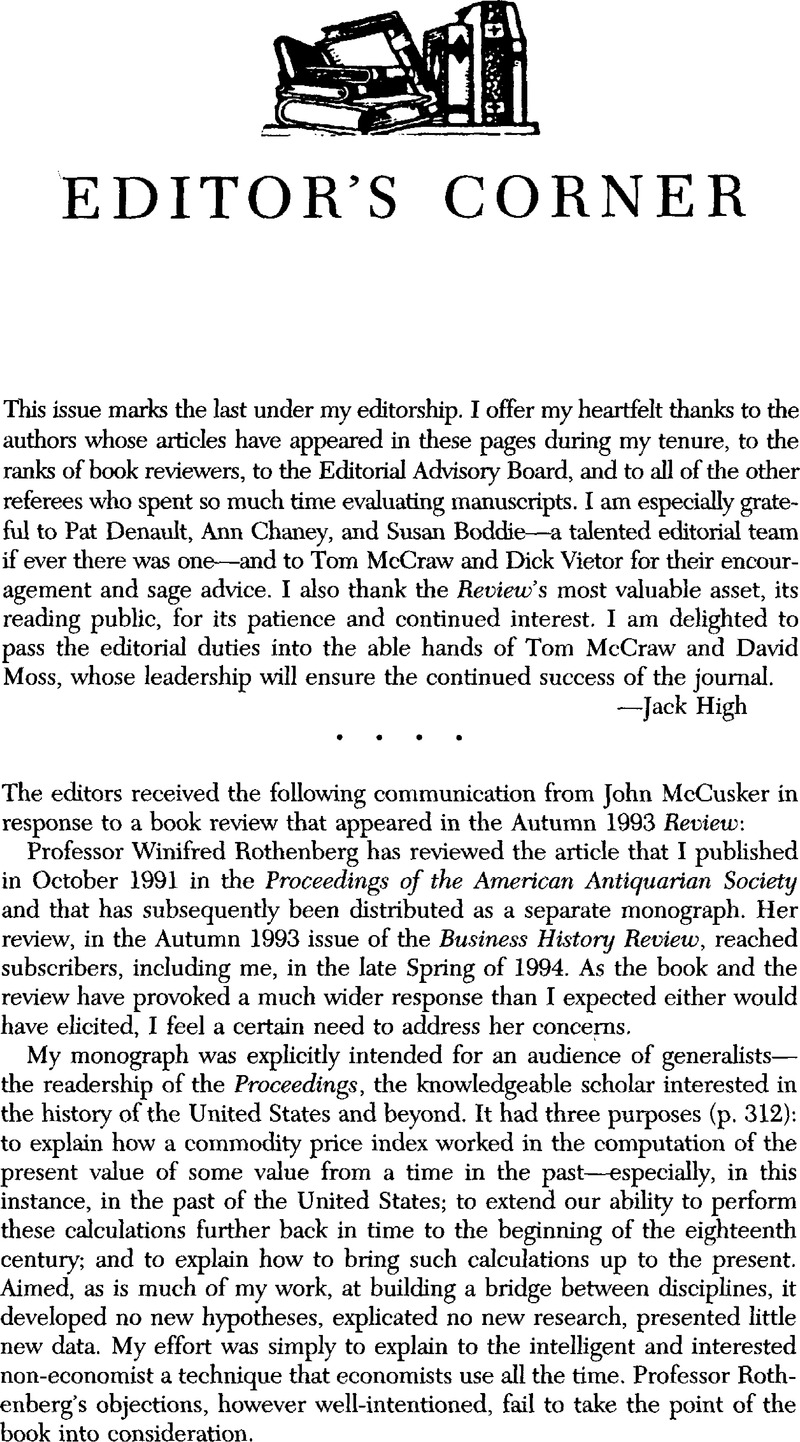Article contents
Editor's Corner
Published online by Cambridge University Press: 13 December 2011
Abstract

- Type
- Editor's Corner
- Information
- Copyright
- Copyright © The President and Fellows of Harvard College 1994
References
1 Professor Rothenberg is, of course, welcome to her doubts. She may think my approach “rather cavalier,” but she is quite correct in noting my “justification [in the work] … of the pioneers of index number theory and practice”(p. 464). They were thoughtful, careful scholars whom no one would call cavalier.
2 Rothenberg, , “A Price Index for Rural Massachusetts, 1750–1855,” Journal of Economic History 39 (Dec. 1979): 980CrossRefGoogle Scholar. These arguments are repeated and elaborated in her book, From Market-Places to a Market Economy: The Transformation of Rural Massachusetts, 1750–1850 (Chicago, Ill., 1992)Google Scholar.
Compare the conclusions drawn from the several studies conducted under the auspices of the International Scientific Committee on Price History as summarized by Cole, Arthur Harrison, Wholesale Commodity Prices in the United States, 1700—1861, 2 vols. (Cambridge, Mass., 1938), 1: 97–101CrossRefGoogle Scholar, 103 (quotation): there was “decreasing variation among individual price series,” series that included Philadelphia, New York, Charleston, New Orleans, and Cincinnati.
3 Newcastle Journal, 19 July 1740, as quoted in Black, Jeremy, The English Press in the Eighteenth Century (London, 1987), 69Google Scholar. Rothenberg, From Market-Places to a Market Economy, 95, detects in “the narrowing of wheat price differentials the emergence of a market economy in much of Europe by the end of the seventeenth century.” Others would find the origins of that process back even further in time and would expand that market economy to much of the North Atlantic world.
- 1
- Cited by


